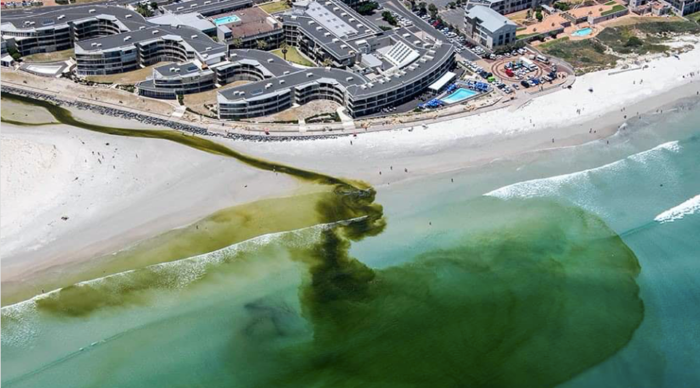While some of the Cape’s urban river catchments are in a relatively good or near-natural state, six catchments face serious challenges, the City of Cape Town’s inland water quality report has found.
Of concern is the ambient water quality of the Diep (Milnerton Lagoon), Salt, Soet, Hout Bay, Big and Little Lotus, and the Kuils/Eerste rivers.
The report, released on Wednesday [February 17], covers the water quality trends in the city’s major rivers and open water bodies from April 2015 to March 2020.
A total of 242 water quality sampling sites were included in the report. These comprise 13 canal sites, seven artificial dam or impoundment sites, two detention ponds, two effluent outlet channels, two estuary sites, 158 river sites, five stormwater outlets and 53 vlei, standing water or wetland sites.
The data reveals that the biggest water quality issue experienced in most of the routinely monitored systems is elevated phosphorus, which drives eutrophic and hypertrophic conditions. Phosphorus enrichment makes receiving water bodies such as vleis vulnerable to excessive plant growth, which requires ongoing maintenance and, at times, poses human health risks due to the presence or risk of microcystin toxins.
The city’s five major wetlands include Zandvlei, Zeekoevlei, Rietvlei, Milnerton Lagoon and Princess Vlei.
Based on an analysis of E. coli and algal microcystin toxin data for the past five years, the technical report concludes that most of these five waterbodies have generally been in a condition conducive to at least intermediate-contact recreation.
However, Milnerton Lagoon has been subject to periodic and, at times, prolonged contamination by E. coli, which suggests exposure to untreated sewage. Rietvlei, in turn, is vulnerable to periodic blue-green algal blooms, some of which have resulted in the production of microcystin toxins at concentrations likely to pose extreme risks to recreational users who come into contact with the waterbody.
While most strains are usually harmless., a few strains may cause diarrhea, vomiting, stomach pains and cramps.
One of the most profound impacts on water quality in Cape Town, as in many other cities, is that of waste. Treated and untreated sewage has a particularly harmful effect on our watercourses.
The City notes the unlawful establishment of informal settlements on unsuitable lands not meant for housing, overflows from sewage pump stations, and high levels of illegal waste dumping and inconsistent use of the City’s refuse management services as just some of the contributing factors.
Today, most, if not all, of the aquatic ecosystems in Cape Town have been affected by additional nutrient inflows, particularly phosphorus, mainly due to man-made causes such as:
– inputs of treated sewage effluent;
– runoff from catchment areas with many backyarder or informal settlements, which are subject to poor levels of sewage, solid waste and stormwater servicing;
– illegal discharges into the stormwater system in industrial and commercial areas (fertiliser factories, carwashes, markets, informal butcheries and meat markets);
– runoff from fertilised gardens and parks; and
– runoff from agricultural areas in (and in some cases beyond) Cape Town borders.
Mayco member for water and waste Xanthea Limberg said: “The report details key challenges towards improving the health of urban waterways. Going forward annual data will be used to assess the efficacy of programmes and activities aimed at reducing water pollution.”
“In making this report publicly available, as well as a less technical summary booklet, the City hopes to equip residents with a holistic perspective of the state of our water bodies, and commits to full transparency as to possible causes of pollution that need to be addressed from within the administration.”
She added: “However, it is also a call to action, as residents have a key role to play in halting the deterioration of these resources, and helping us transition into a water-sensitive city.”
The City has committed itself to becoming a water sensitive city by 2040. A water-sensitive city is a city where rivers, canals and streams are accessible, inclusive and safe to use.
Read the technical summary HERE.
Picture: Cape Town ETC Gallery






